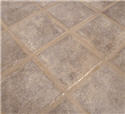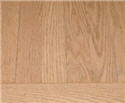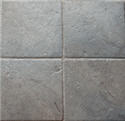Tile & Floor Installation Tips, Ideas
Several factors determine whether you will receive a quality install, and, one that will fall within your budget and expected timeline.
# 1) Choice of materials - this must take into consideration the environment that the tile or flooring will
be subject to on a daily basis. Certain engineered flooring materials offer high levels of wearability, and
relative ease of install. But one possible disadvantage here is the ability to repair it, once put in place,
(speaking about discoloration
and the need to pull larger sections than those affected).
Solid hardwood, on the other hand, is re-finished by sanding and can even be re-colored by staining.
Ceramic tiles are well suited for areas prone to moisture, assuming their required maintenance.
While decorative tiles are usually for areas receiving with little or no stress - be sure to go with rated
floor tiles for creating customizable patterns.
# 2) Subfloor and Underlayments - many tile installers are known to set over existing linoleum, while some
make it a point to set onto a cementitious board, such as for bath flooring. While a great many tile wall
applications are found right over drywall, and this might be done with success depending upon factors like weight load,
adherence and other factors having to do with dampness - be wary since this practice can be cause of future failure.
If the structure underneath needs bolstering, this is definitely the time to do it. Ignoring the structural strength can
be cause for cracking, breakage and uneveness.
If the application is on a slab, plan on a vapor barrier that is to be cut, trimmed and installed less any gaps or seams showing,
per specification.
# 3) Adhesives, fastening methods - the adhesives being used for binding are critical. Cheaper, pre-mixed compounds, notably
some of the vinyl composition adhesives have been known to release on exposure to elements of moisture and water.
For example around tubs, below sinks and around shower basins.
For slat or hardwood floors, pneumatic nailing might well be called for, so if doing going DIY be sure you are both
comfortable and competent using the gun. As well as cutting by mitre box.
# 4) Grouts and seams - the combination of color and grout dimension being floated will help determine appearance and serviceability
of the floor. The seams of both engineered and solid wood flooring should be virtually undetectable; both for overall appearance
sake and to avoid the collection of dust and dirt from foot traffic.
# 5) Maintenance requirements - if you are seeking the least amount of maintenance, engineered surfaces are the way to go.
Hardwood refinishing is a proposition that does involve inconvenience, effort and expense but it is normally highly durable up until that time.
Grout lines typically need sealing on a regular basis, depending on wear, light, and other factors. And these should first be cleaned.
Focusing on the Install:
Gives tips on some of the less-oft considered parts of the job, such as the responsibility of moving furniture,
caulking and the finishing touches.
 Setting Tile - Major Factors
Setting Tile - Major Factors
Many of the important factors that affect the setting
like substrates and subfloor, various membranes and backer boards, adhesives and sealers.
Covering spacer widths available, and grouts and sealers to finish with.
And who ever talks about spares?
 Hardwood Flooring Cost
Hardwood Flooring Cost
Choices in the mix, wood-types and finishes.
Factors that affect cost like removal of the existing floor, underlayments and reinforcements,
chosen patterns and more.
We look at
how to fix those squeaky floors.
 Tile Flooring Cost
Tile Flooring Cost
Taking into account the tile size, chosen design and layout,
such as accents and inlays, and other characteristics.
The cuts involved will have a lot to do with pricing, This is not always done the same way, for giving different results.

 Setting Tile - Major Factors
Setting Tile - Major Factors
 Hardwood Flooring Cost
Hardwood Flooring Cost
 Tile Flooring Cost
Tile Flooring Cost